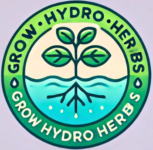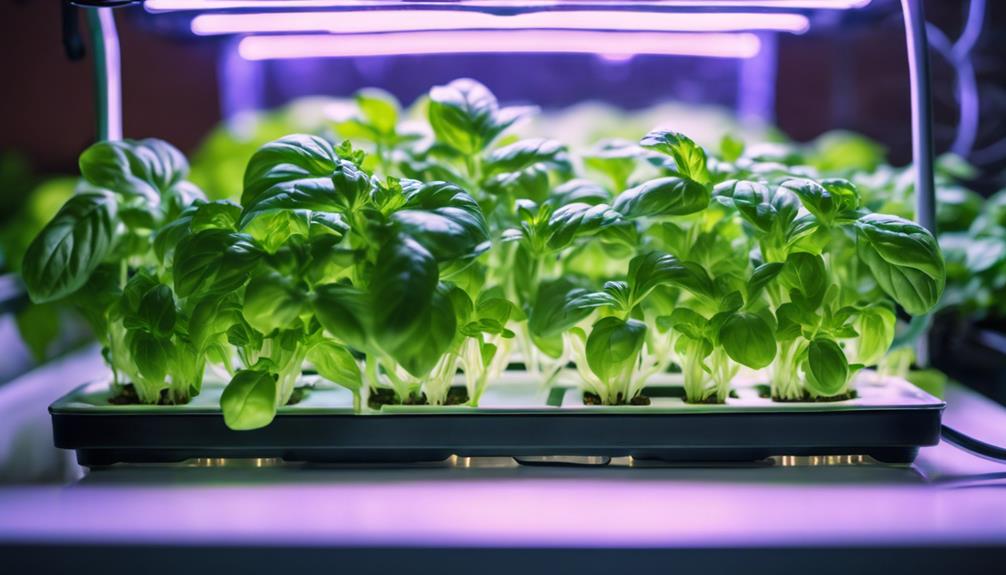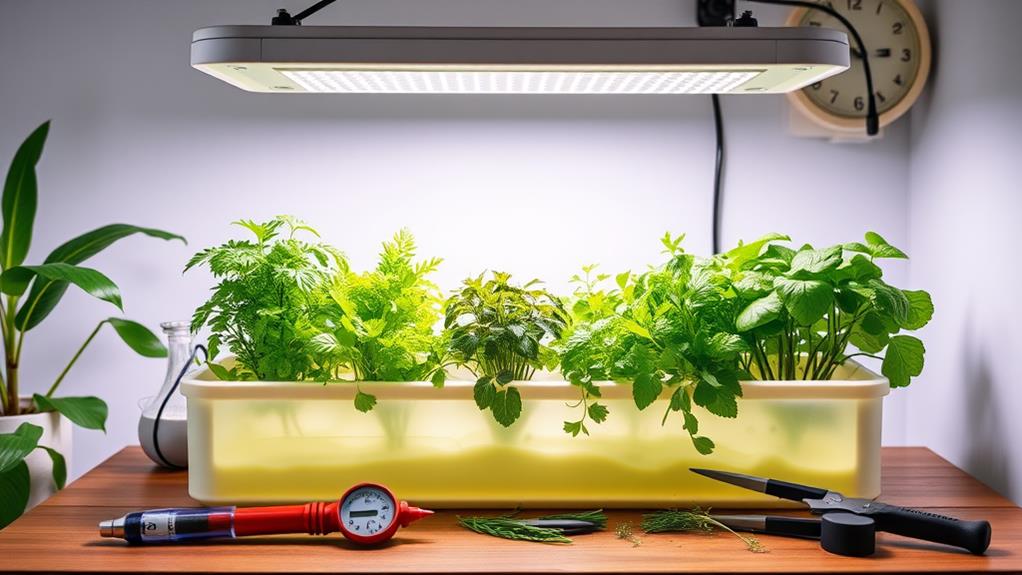Why do we care about Nutrient Deficiencies in Hydroponic Systems?
Hydroponics is a powerful method for growing herbs, but it’s not without its challenges. One major concern is ensuring plants get the right balance of nutrients. Unlike soil, where plants can often find a mix of nutrients on their own, hydroponic systems rely entirely on what you provide. This means understanding and managing nutrient deficiencies in hydroponic systems is crucial.
Balancing nutrients is vital in hydroponic herb gardens. When nutrients are imbalanced, it can lead to deficiencies, which have a direct impact on plant health and growth. For herbs, this means slower growth, smaller leaves, and weaker flavors. Even more, serious issues can arise, like poor root development and plant death.
Recognizing the symptoms of nutrient deficiencies early can make all the difference. Common symptoms include yellowing leaves, purple discoloration, leaf curl, browning tips, stunted growth, and pale leaves. However, these symptoms can vary depending on which nutrient is lacking. For instance, a nitrogen deficiency often shows up as yellow leaves, while a lack of phosphorus might cause leaves to turn purple.
When plants lack the essential nutrients they need, their overall health suffers. Nutrient deficiencies weaken a plant’s resistance to disease and pests, lead to reduced yields, and affect the quality of the herbs produced. For anyone serious about their hydroponic garden, keeping a close eye on nutrient levels is non-negotiable.
GrowHydroHerbs TLDR
- Recognize early symptoms of nutrient deficiencies like yellowing leaves or purple discoloration.
- Regularly monitor water pH, EC, and TDS levels for proper nutrient uptake.
- Adjust nutrient solutions with balanced macronutrients and micronutrients.
- Prevent deficiencies by following a consistent feeding schedule and system maintenance.
- Flush your system periodically to prevent nutrient lockout from salt buildup.
Identifying Nutrient Deficiency Symptoms
Recognizing nutrient deficiencies early is key to maintaining a healthy hydroponic herb garden. Each deficiency presents unique symptoms, and understanding these signs can help you take swift corrective action.
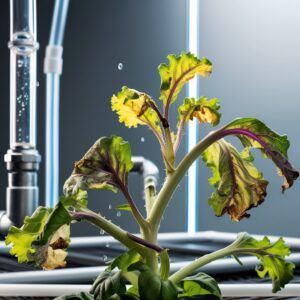
Yellowing leaves often indicate nitrogen deficiency. Nitrogen is crucial for the growth of foliage, so if your plants are lacking it, the leaves will start to yellow, starting from the oldest leaves at the base.
Purple discoloration is a common sign of phosphorus deficiency. Phosphorus is vital for energy transfer in plants, and without enough of it, leaves may develop a reddish-purple hue, particularly on their undersides.
Leaf curl and browning tips usually suggest a potassium deficiency. Potassium regulates various processes, including water uptake and enzyme activation. Leaves affected by potassium shortage often curl at the edges and develop brown, scorched tips.
Stunted growth or pale leaves might be the result of a magnesium deficiency. Magnesium is a core component of chlorophyll, essential for photosynthesis. Plants lacking magnesium will not only stop growing but may also show pale or yellow leaves, particularly between the veins.
It’s equally important to check the health of the roots when diagnosing deficiencies. Healthy roots are usually white or light tan and firm. If roots are brown or slimy, it might indicate a broader issue impacting nutrient uptake. Maintaining root health is often a proactive step in identifying and addressing nutrient deficiencies before they affect the entire plant.
Monitoring Water Quality and Nutrient Levels
Monitoring water quality and nutrient levels in your hydroponic system is fundamental for healthy herb growth. One of the first steps is to regularly check the pH level of your nutrient solution. The pH scale, which measures how acidic or alkaline a solution is, plays a crucial role in nutrient availability. Ideally, the pH should be between 5.5 and 6.5 for most herbs. Imbalanced pH levels can cause nutrient lockout, where nutrients become unavailable to plants even if they are in the solution.

Electrical Conductivity (EC) and Total Dissolved Solids (TDS) are also essential metrics to monitor. EC measures the solution’s ability to conduct electricity, which correlates with the nutrient concentration. TDS gives an estimate of the total amount of dissolved solids, mostly minerals, in the solution. Regularly measuring EC and TDS helps ensure that your plants receive the proper nutrient concentration. Both metrics should be kept within the recommended range for your specific herbs to avoid over- or underfeeding.
A range of tools is available to help you monitor these water properties effectively. Digital pH meters, EC meters, and TDS meters are widely used for their accuracy and ease of use. Many of these tools offer quick, reliable readings and can alert you to issues before they become serious problems. Investing in high-quality monitoring tools can save time and protect your plants from nutrient deficiencies.
Staying on top of water quality doesn’t stop at measuring pH, EC, and TDS. The cleanliness of the water supply and the hydroponic system itself also plays a critical role. Ensuring that your water source is free from contaminants and keeping your system clean can prevent the introduction of pathogens and other issues that could disrupt nutrient uptake.
Adjusting Nutrient Solution
Tailoring the nutrient solution to address deficiencies is essential for keeping your hydroponic herbs healthy. Using complete hydroponic nutrient mixes is often the best starting point. These mixes are specifically designed to provide a balanced array of nutrients, ensuring your plants get what they need.
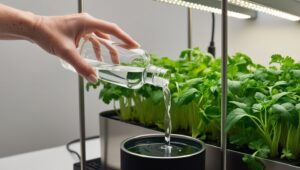
Macronutrients—nitrogen (N), phosphorus (P), and potassium (K)—are the building blocks of plant health. Nitrogen promotes lush foliage, phosphorus supports root and flower development, and potassium helps with water regulation and overall plant strength. Ensuring your nutrient solution has the right balance of these macronutrients can rectify many common deficiencies.
In addition to macronutrients, plants also require micronutrients like calcium and magnesium, albeit in smaller amounts. Calcium is important for cell wall structure, while magnesium is integral to chlorophyll production. If your plants show signs of deficiencies, supplementing with these micronutrients can make a big difference.
Adjustments may also be necessary based on the specific needs of your herbs. Some plants may require higher levels of certain nutrients during different growth stages. For instance, herbs like basil might need more nitrogen during their vegetative phase but more phosphorus when flowering. Understanding the lifecycle of your herbs will help you make informed decisions on nutrient adjustments.
Don’t forget to mix your nutrient solution correctly and follow the manufacturer’s guidelines. Over-concentration can be as harmful as under-concentration. Consistent mixing and accurate dosing ensure that your plants receive the proper nutrition without risking toxicity.
Preventing Future Nutrient Deficiencies In Hydroponic Systems
Regularly changing your nutrient solution is one of the simplest yet most effective ways to prevent deficiencies. Over time, the composition of the solution can become imbalanced as plants absorb nutrients at different rates. Scheduling regular nutrient solution changes ensures that your plants always have access to a balanced supply of essential nutrients.
Flushing the system periodically can remove any nutrient buildup that might interfere with absorption. Over time, unused nutrients and salts can accumulate in the system, potentially leading to issues like nutrient lockout. A good flush with clean, pH-balanced water helps reset the system and keeps the root zone healthy.
Following a consistent nutrient feeding schedule is crucial for maintaining balanced nutrition. Skipping feedings or inconsistent dosing can lead to fluctuations in nutrient availability, which stress the plants. By sticking to a schedule, you provide a steady supply of nutrients, minimizing the risk of deficiencies.
Using a nutrient log to track what has been added and when can be incredibly helpful. Keeping detailed records allows you to spot patterns and make adjustments before small issues turn into major problems.
Finally, regular system maintenance cannot be overemphasized. Cleanliness plays a big role in preventing deficiencies and other issues. Ensure all equipment remains clean and free from algae or debris to maintain an optimal growing environment for your herbs.
Troubleshooting Common Deficiency Issues
Addressing algae growth in your system is crucial for preventing nutrient uptake problems. Algae compete with your plants for nutrients and can also clog your system. Regularly check your system for algae and clean it as needed. Using opaque containers or covers can reduce light exposure, discouraging algae growth.
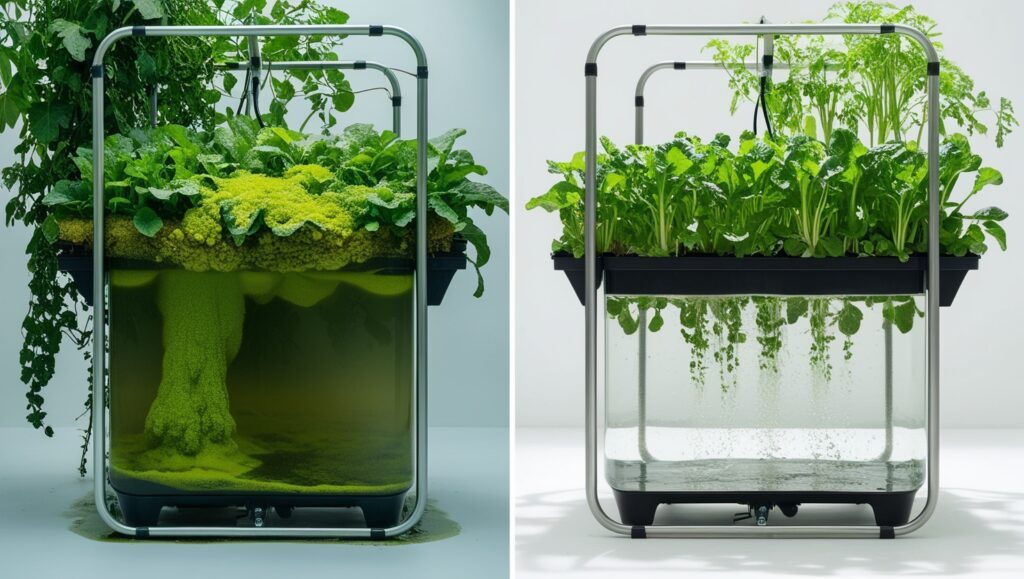
Poor oxygenation is another issue that affects root health and nutrient absorption. Ensure your water has adequate oxygen levels—using air stones or air pumps can help maintain this balance. Roots deprived of oxygen are less efficient at taking in nutrients, exacerbating deficiencies.
Managing water temperature is often overlooked but vital. Water that’s too hot or too cold can interfere with nutrient uptake. Aim to keep your water temperature between 65°F and 75°F for optimal nutrient availability. Using a thermometer can help you monitor and adjust the temperature as needed.
Testing for salt buildup is also essential. Over time, salts can accumulate in your hydroponic system, hindering nutrient absorption. Flushing the system regularly with fresh, balanced water can prevent this issue. Using distilled or reverse osmosis water can minimize salt accumulation in the first place.
Mineral deficiencies, despite using a balanced nutrient solution, can sometimes occur due to environmental factors or plant-specific needs. Conducting regular visual inspections and nutrient solution tests can catch these deficiencies early, allowing for timely interventions.
Conclusion and Best Practices
Proactive monitoring and early detection are your best allies in maintaining a healthy hydroponic herb garden. By regularly checking for the symptoms of nutrient deficiencies such as yellowing leaves or purple discoloration, you can address issues before they worsen.
Consistency is key. Whether it’s changing the nutrient solution, maintaining pH levels, or following a feeding schedule, sticking to a routine helps keep your plants in the best possible health. Regular system maintenance, including frequent checks for algae, ensures a cleaner environment conducive to nutrient uptake.
Investing in quality tools for monitoring pH, EC, and TDS makes it easier to identify and correct potential problems early. Keeping detailed logs can help track what nutrients you’ve added, providing valuable insights for future adjustments.
Tailor your nutrient solutions to meet the specific needs of your herbs at different growth stages. This ensures your plants receive the right balance of macronutrients and micronutrients for robust growth and yields.
Finally, clean and well-maintained systems are the foundation of successful hydroponics. Regular flushing and using quality water sources prevent nutrient buildup and other issues.
Combining these best practices will help you sustain a balanced nutrient system, leading to healthier herbs and a more productive hydroponic garden.
Questions? We Have Answers.
Get answers to a list of the most Frequently Asked Questions.
